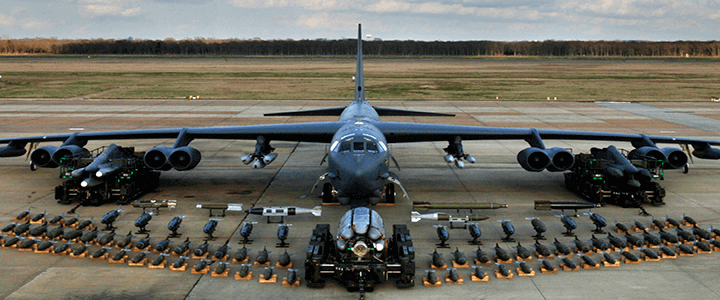The Air Force has sent its share of confusing messages recently. First there was the news on Friday that the president had signed an amendment to a 2001 executive order giving the military departments the authority to involuntarily recall retirees to active duty. The Pentagon said the move was necessary to address the Air Force’s shortage of 1,500 pilots.
After countless retired pilots changed their names and addresses (just kidding, really… I think) the headquarters clarified on Sunday that they really only need to recall a fraction of that number. furthermore, the recalled pilots would be volunteers, and would be used as instructors and in staff positions, allowing active pilots to return to the cockpit.
return of the cold war
But Sunday’s exclusive in the online defense magazine Defense One raised even more eyebrows. (If this keeps up, eyebrow raising may become an Olympic sport). During a visit to Barksdale Air Force Base outside of Shreveport, La., Air Force Chief of Staff Gen. Paul Goldfein told a Defense One reporter that the service was considering returning at least a portion of its strategic bomber force to 24-hour alert.
There was no order in place, nor was one necessarily imminent, he said, but that work was underway to improve the alert facilities in the anticipation that it would come.
Naturally, this set off panic bells inside the Pentagon. Monday morning, the Air Force’s civilian spokesman, Ann Stefanek, said “We are not planning or preparing to put B-52s back on alert.”
Air Force public affairs chief Brig. Gen. Edward Thomas himself said, “What I can tell you and just make as clear as possible, and I want to make sure we are clear on this, is there are not any discussions and there is not any plans to bring back our bombers on 24-hour nuclear alert right now.”
Translation: we’re planning on it, but the chief spoke to soon.
oldest leg of the nuclear triad
The nation’s ICBMs and nuclear bombers are owned by the Air Force Global Strike Command, the successor to the Cold War-era Strategic Air Command. From its establishment in 1948 until 1992, the SAC’s bombers were on 24-hour alert, ready to respond via air to a nuclear attack. The USAF’s strategic bombers — the B-1B Lancer, the B-2 Spirit, and the venerable B-52 Stratofortress, known for being older than all the pilots who fly them — represent the oldest of the three legs of the nuclear triad.
To review, the nuclear triad refers to the balancing of the nation’s nuclear weapons between those launched from the ground, from the air, and from ballistic missile submarines. The goal is to ensure that at least some of the nation’s nuclear warheads survive a nuclear attack and are ready to counterattack.
Before the advent of nuclear-capable ballistic missiles, strategic bombers were the only way to deliver a nuclear weapon, and the force was always ready at a moment’s notice. Air crews would live next to their aircraft, and nuclear weapons would be stored nearby, to allow for rapid deployment. One such set of facilities, at the end of the runway at Barksdale Air Force Base, is under renovation as part of the (possibly, maybe) return to 24-hour alert.
None of this is to suggest that a nuclear war with North Korea, or anyone else for that matter, is imminent. But capabilities like staying on alert around the clock cannot be created after an emergency arises. It’s always better to have a capability and not need it than to need one and not have it.
The USAF’s moves, whether they result in an actual return of the alert policy or not, are smart planning, but a bit of poor communication.




